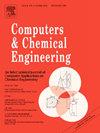A unified model integrating Granger causality-based causal discovery and fault diagnosis in chemical processes
IF 3.9
2区 工程技术
Q2 COMPUTER SCIENCE, INTERDISCIPLINARY APPLICATIONS
引用次数: 0
Abstract
Reasoning about cause and effect in industrial processes is fundamental to fault diagnosis. However, traditional methods for causal discovery and fault diagnosis are typically developed separately, resulting in complex and fragmented approaches that lack transparency and interpretability. Since the explicit identification of root causes from causal graphs remains an open issue, we propose a unified diagnosis model for chemical processes that integrates causal discovery, fault detection, and root cause diagnosis within a single framework. Granger causality is learned from monitoring time-series data for online predictions. This causal embedding ensures that prediction deviations occur only in variables causally linked to the root cause, effectively mitigating the ’smearing effect’ caused by unrelated variables. The explicit causal graph provides interpretive insights into fault propagation and enhances the traceability of the diagnostic process by enabling the identification of fault evolution paths and root causes. Experimental results on synthetic data, a continuously stirred-tank reactor (CSTR) process, and a real-world continuous catalytic reforming (CCR) process demonstrate that our approach achieves high diagnostic accuracy and low false alarm rates, offering a practical, interpretable, and scalable solution for fault diagnosis in industrial chemical processes.
求助全文
约1分钟内获得全文
求助全文
来源期刊

Computers & Chemical Engineering
工程技术-工程:化工
CiteScore
8.70
自引率
14.00%
发文量
374
审稿时长
70 days
期刊介绍:
Computers & Chemical Engineering is primarily a journal of record for new developments in the application of computing and systems technology to chemical engineering problems.
 求助内容:
求助内容: 应助结果提醒方式:
应助结果提醒方式:


